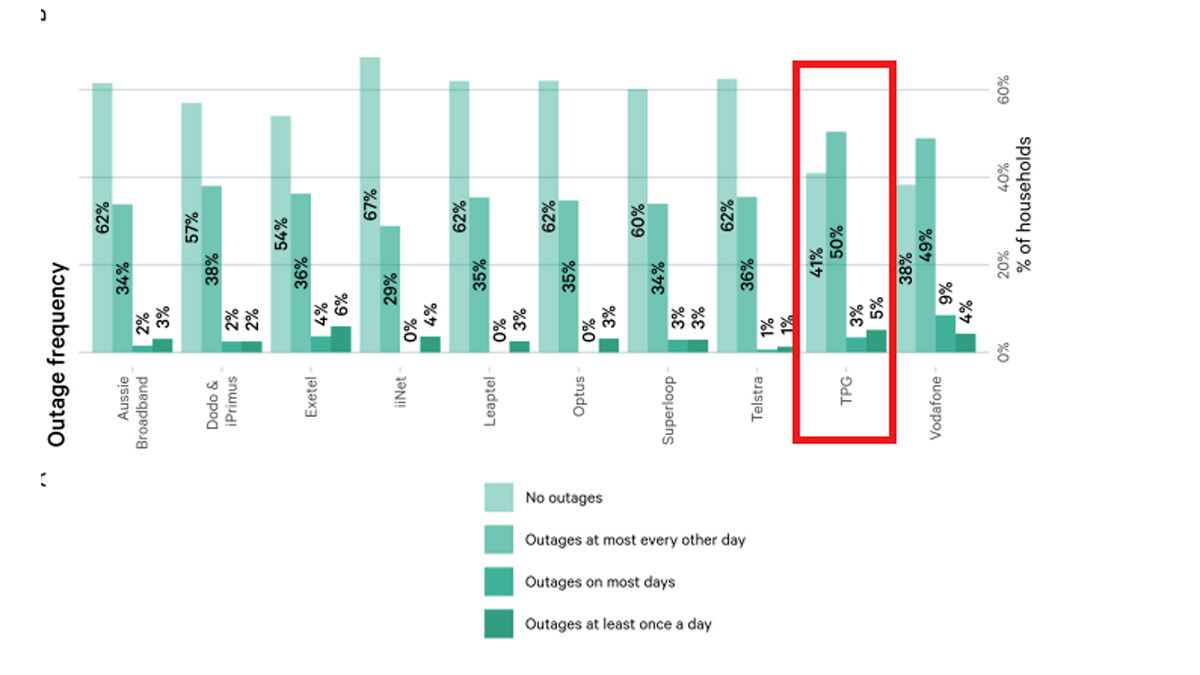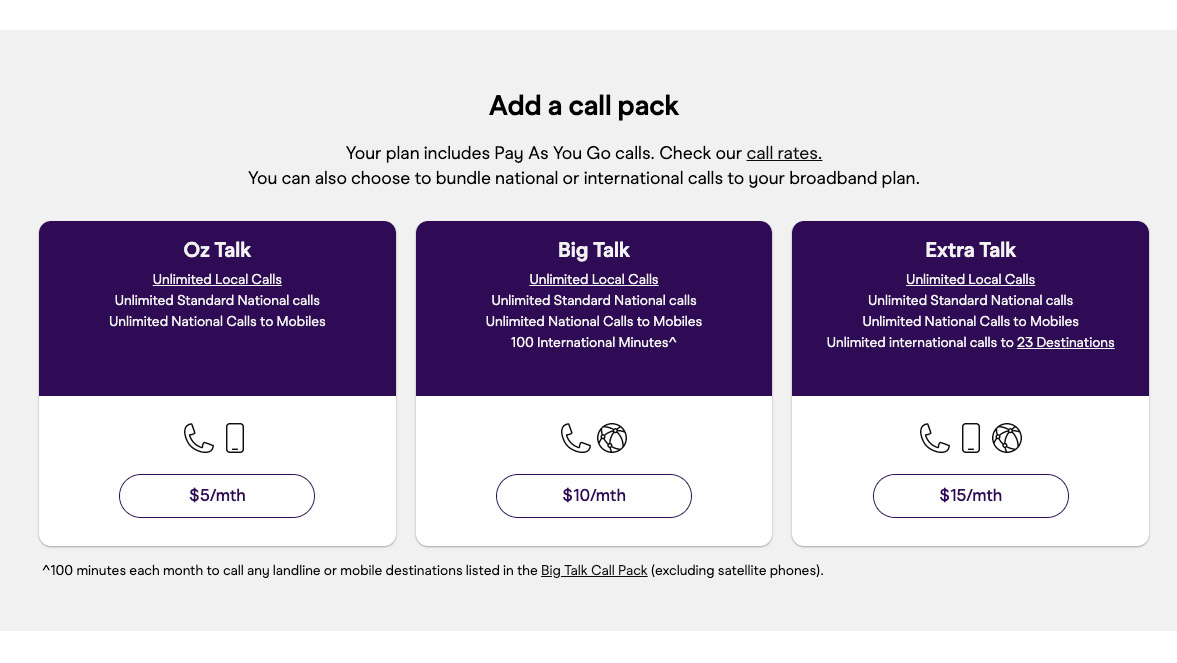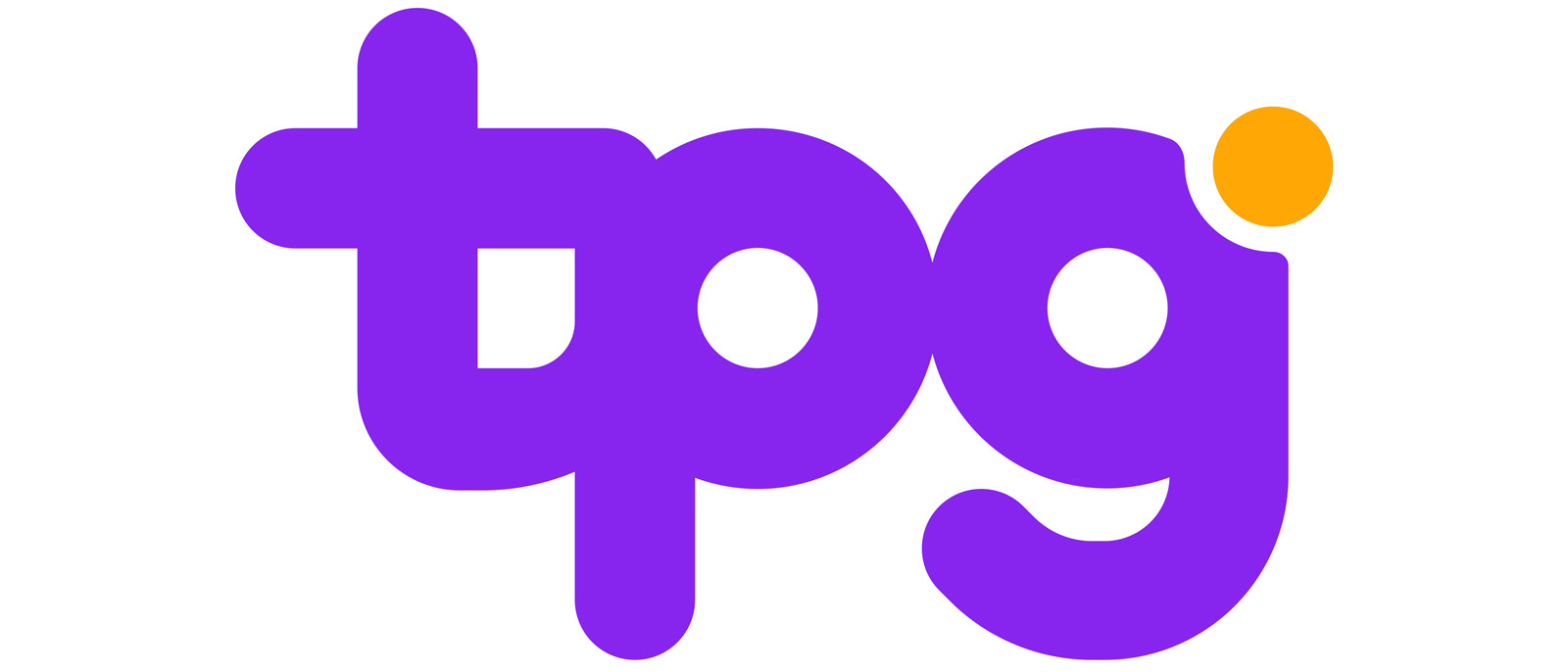Tom's Guide Verdict
TPG appears to be a good NBN provider, delivering consistently reliable speeds and offering plans that present pretty good value. They're not the cheapest NBN plans around, but they are in line with the national average. Customer support does appear to have taken a downturn recently, but as with any real world customer account, reviews do need to be taken with a pinch of salt.
Pros
- +
FTTB plans present good value and speed
- +
Reliable speeds across other NBN plans
Cons
- -
Customer service is questionable
- -
No entertainment bundle options
Why you can trust Tom's Guide
TPG, or TPG Telecom Limited, is Australia’s second-largest telecommunications provider, following its merger with Vodafone that was completed in 2020. TPG is now home to several household names, including TPG (obviously), Vodafone, iiNet and formerly, Internode. While these brands all offer similar services, they are still separate entities, so for the purposes of this review, we’re going to focus solely on the NBN services provided by TPG itself.
As previously mentioned, TPG is Australia’s second-largest telco based on the number of active services, with just over 1.75 million users, representing a 20% market share, according to the most recent data published by the Australian Competition and Consumer Commission (ACCC).
However, this figure does include active services across all its brands, including Vodafone, iiNet and Internode. We haven’t been able to track down a figure for just active TPG services, but considering Optus sits in third place with just under 1.1 million services, we can make a logical assumption and say that TPG alone will have similar or fewer services.
The internet service provider (ISP) advertises itself as offering “great value internet,” although when comparing its monthly pricing against the competition, it does sit towards the higher end of the budget spectrum. We’ll be investigating if this higher cost yields a better class of service later in this review.
We’ll also aim to determine if TPG, as one of the big three telcos alongside Telstra and Optus, is the one to go for if you want to sign with a household name.
Noteworthy TPG deals
TPG has introduced some tempting discounts across all of its NBN plans at the time of writing (May 2025), which have been slated to expire on July 22, 2025. Current prices and deals are as follows:
- NBN 50: Save AU$20p/m for 6 months (then AU$84.99 p/m)
- NBN 100: Save AU$30p/m for 6 months (then AU$94.99p/m)
Plans
TPG supports all the NBN speed tiers, from Basic I (NBN 12) all the way through to Ultrafast (NBN 1000) and for plans NBN 12 to NBN 250, TPG advertises the maximum typical evening speed. On the NBN 1000 tier, TPG’s typical evening speed figure is just 200Mbps off the theoretical maximum. Considering only a handful of providers claim faster speeds, this isn't a major negative against the telco.
Get instant access to breaking news, the hottest reviews, great deals and helpful tips.
TPG’s NBN plans, including regular pricing and typical evening speeds (correct at time of writing) are as follows:
- NBN 12: AU$74.99p/m (Typical evening speed 12Mbps)
- NBN 25: AU$76.99p/m (Typical evening speed 25Mbps)
- NBN 50: AU$84.99p/m (Typical evening speed 50Mbps)
- NBN 100: AU$94.99p/m (Typical evening speed 100Mbps)
- NBN 250: AU$99.99p/m (Typical evening speed 250Mbps)
- NBN 1000: AU$109.99p/m (Typical evening speed 800Mbps)
FTTB Plans
TPG offers a separate set of plans exclusively for customers who can connect via fibre-to-the-building (FTTB). These plans are facilitated by TPG’s own private infrastructure network, which was first proposed in 2013. This private network, which operates separately from the NBN, is available in select apartment buildings in Sydney, Melbourne, Brisbane, Adelaide and Perth.
If you can connect to TPG’s FTTB service — you can only find out by checking your address on the TPG website, as opposed to NBN plan comparison sites such as WhistleOut — then there may also be the possibility of being able to connect to the NBN via another delivery method.
TPG initially offered just one speed tier of 100Mbps on its FTTB plans, but that has now changed, with FTTB Max plans promising to offer a similar experience to NBN 1000, with typical evening speeds of 500Mbps.
Speeds
As we’ve just covered, TPG offers plans across NBN speed tiers, including NBN 12. You may think that not many people will want to connect to the slowest speed tier, and you'd be right. The latest ACCC data shows just there are just over 470,000 active connections, in a total of just under 8.8 million.
TPG also offers services on the Ultrafast and Superfast tiers, and provides more contextual information in its NBN key facts sheet. It does say that maximum download speeds on both the NBN 250 and NBN 1000 tiers are indeed, 250Mbps and 1,000Mbps respectively.
TPG does also indicate that the maximum download speed you’re capable of achieving on the NBN 1000 plan is dependent on the connection type you have. In the key facts sheet, the telco says that if you’re connected via hybrid fibre coaxial (HFC) then you can only achieve a maximum download speed of 500Mbps. If you’re connected via fibre-to-the-premises (FTTP) however, then your maximum is 990Mbps.

Are advertised speeds on any TPG plan achievable, though? According to the most recent data published by the ACCC, the answer is yes, in theory. In the Measuring Broadband Australia report published in March 2025, TPG was found to deliver 103.1% of plan speeds during all hours and 102.5% during the busy hours of 7pm — 11pm.
These figures place TPG among the fastest performers, although the fact is virtually all providers are now starting to break the 100% barrier.
Overall, we’re happy with TPG’s performance when it comes to NBN plan speeds.
Cost
It’s fair to say that if you’re looking for the cheapest NBN plans around, then you’re not going to be interested in joining TPG. While the telco certainly isn’t the most expensive NBN provider, multiple telcos are more affordable and, on paper at least, offer a similar (or even better) service.
Spintel, for example, is one of the most affordable NBN providers in the country, with all of its NBN plans coming in well below the monthly average. And, while there isn’t any official ACCC data to determine if it delivers advertised speeds, real-world customer feedback for the service is largely positive.
Exetel is another to offer some of the most competitively-priced NBN plans. It too has been found to regularly deliver a reliable service and it also has a feature called Speed Boost Days, that allows you to temporarily boost the download speed of your service to the next available tier for free, five times a month. We feel this feature in particular provides great extra value.
It is pleasing to see introductory discounts across all of TPG's plans at the moment, however, especially the NBN 100 plan, which has received the biggest discount.
To provide some greater transparency and context in regards to how TPG’s NBN plans cost compared to other NBN providers, we’ve worked out the average monthly cost (following any introductory discounts) of all NBN plans available through WhistleOut at the time of writing. We’ve not included NBN 12 plans in this comparison.
- NBN 25: Average monthly cost — AU$70.81. TPG monthly cost: AU$76.99
- NBN 50: Average monthly cost — AU$84.80. TPG monthly cost: AU$84.99
- NBN 100: Average monthly cost — AU$92.49. TPG monthly cost: AU$94.99
- NBN 250: Average monthly cost — AU$105.50. TPG monthly cost: AU$99.99
- NBN 1000: Average monthly cost — AU$118.19. TPG monthly cost: AU$109.99
As you can see from the information above, TPG’s NBN plans tend to hover around the monthly average and in some cases, such as with NBN 250, it’s actually cheaper.
Interestingly, the same plans on TPG’s subsidiary services iiNet and Internode are more expensive.
As with the majority of other NBN providers, TPG gives you the option of purchasing a preconfigured modem to use with its NBN service. This costs AU$114.95, but includes free delivery. This is one of the more affordable options compared to other providers, although some — such as Vodafone and Optus — offer theirs on a payment plan, which you only need to pay if you cancel your service before a specified period has elapsed.
You do also have the option of using your own modem and TPG does offer an AU$100 rebate, but only if you buy the modem within 30 days before or after applying for a TPG NBN plan. This means if you’ve been holding onto a modem for a couple of years, you won’t be eligible for the modem rebate, as you need to provide proof of purchase.
Reliability
To determine the reliability of an NBN provider, we can look at official information relating to NBN outages published by the ACCC, as well as real-world accounts from customers on forums such as Whirlpool and review sites including Product Review and Trustpilot.
On both review sites, TPG doesn’t score particularly highly, although reviews on Trustpilot are a mixture of both NBN and mobile services, which are consolidated to give an overall star rating. On Product Review, the majority of reviews relate to customer service and individual cases of customers trying to cancel their plans.
Conversely, there are also five-star reviews for customer service, technical support and speed of service, so it’s always best to take these reviews with a pinch of salt.
As for Whirlpool, we’re a little surprised to find only a small number of forum threads posted relating to download speeds. These threads appear to reflect individual cases of customers questioning subjects such as what speed they should be getting and intermittent latency spikes.
We have found a dedicated thread for TPG’s FTTB service and customers posting there have been mentioning a speed boost they’ve noticed on their service, which has seen it increase to around 110Mbps download. Overall, it seems customers on the FTTB plan are satisfied with the service they receive.

As for official ACCC data relating to outages, it isn’t all sunshine and rainbows for TPG. The Australian consumer watchdog determines the average number of outages per day, along with the average duration. In the case of TPG, it experienced 0.18 outages per day on average. This might not seem like a lot, but when you consider Telstra experienced 0.07 average daily outages, it's less impressive. Exetel, however, experienced 0.43 average daily outages during the same period.
There are actually some customer accounts of their internet going down, but being reconnected so quickly that they never realised there was an issue in the first place.
Data caps
TPG doesn’t impose any data caps on any of its NBN plans.
Gaming
A key factor in one’s decision as to which NBN provider to sign with is how it performs when gaming online, especially when you consider a good majority of gaming servers are located overseas. TPG doesn’t make any bold claims about gaming on its service, not even in the Key Facts Sheet. We’ve previously seen some other NBN providers mention which tiers are best for certain scenarios, such as streaming 4K Ultra HD content, having multiple users connected at once and indeed, online gaming. In TPG’s table, there’s no mention of the latter.
It is worth mentioning that the download speed of an NBN plan is unlikely to have any effect on online gaming performance anyway, as has been pointed out recently by the ACCC itself.
A key measure of an NBN provider’s online gaming prowess is latency and the ACCC recently determined that NSW and the ACT returned the best — or should we say, lowest — latency times in Australia. This doesn’t necessarily mean your NBN provider — TPG in this instance — will perform well in these states, but the data does prove that download speed has little to no effect.
We haven’t been able to find too much information from TPG customers relating to how well their service performs, but official ACCC data published in March 2025 found latency on TPG’s network was 10.1ms across all hours and 10.3ms during busy hours. Superloop, Launtel and Exetel all performed better, and Aussie Broadband just pipped TPG, despite being one of the sole telcos to advertise itself as being a great option for gamers.
While some telcos may offer slightly better network optimisation and routing to overseas servers, where you live in Australia is going to have a big impact on the latency speed of your NBN connection. Our advice, if you’re looking to sign up for a TPG NBN plan, is to go ahead and do so, try it for a month and cancel it if you feel it doesn’t live up to expectations.
TPG NBN plans work on a no lock-in contract basis, so you will be free to leave whenever you wish.
Extra features
As we alluded to earlier when referencing the FTTB plan, TPG also offers a phone line service which can be added on to any NBN plan. There are four tiers to choose from, starting with a pay as you go option. The three remaining tiers: Oz Talk, Big Talk and Extra Talk, all offer unlimited local and standard national calls. Oz Talk and Extra Talk include unlimited calls to Australian mobiles.
Big Talk includes 100 international minutes to call any landline or mobile number in another country. Extra Talk, however, includes unlimited calls to landline or mobile numbers in 23 countries, including Canada, the United Kingdom and the United States.

Oz Talk costs AU$5 p/m, Big Talk is AU$10p/m, while Extra Talk will set you back an extra AU$15p/m.
Oz Talk, Big Talk and Extra Talk are available as add ons to an FTTB bundle for the same costs.
Cancellation and hidden costs
Because TPG works on a no lock-in contract model, there are no cancellation fees to pay if you decide to cancel your service. However, it should be noted that TPG requires a 30-day notice period if you wish to cancel. TPG isn’t alone in requesting this — Exetel is another example — but it is something that has appeared to have caught out a few customers in the past.
TPG does mention the requirement for 30 days written notice in its terms and conditions and adds that you “must pay for charges for the service up to the end of the notice period.”
We reached out to TPG for clarification on the cancellation process, and the telco had this to say.
"When you request a cancellation, you will need to provide 30 days cancellation. It's up to you that you can keep the service active for the 30 days or you can disconnect service prior to the 30 days. No pro-rata credit on the 30 days notice if you disconnect earlier."
We've asked for follow-up confirmation on the wording of this statement, namely how a customer will be given the option of keeping or disconnecting their service, and if they do indeed need to pay for the 30 day period if they choose to disconnect.
We've also asked for clarification on how a customer is able to cancel, whether they have to call, email or if they can access an option through an online portal.
"If you have an active contract, 30 days notice is not required; but you are required to pay contract break fee instead (50% of the monthly charges that would have been paid between the date of cancellation and the end of the contract period)."
"The billing anniversary is not a factor on the 30 days notice, but it's a factor on the pro-rata credit. As TPG NBN service is prepaid service, any unused portion of the paid month will be credited and used towards the 30 days notice or contract break fee."
Reputation
We’ve already brought customer reviews into discussion in this review, although these have related more to the reliability of the service rather than the customer support.
As we mentioned earlier, however, the majority of negative reviews against TPG do relate to customer service. On Product Review, for example, TPG Broadband scores a low 1.8 stars out of 5, based on 4,880 reviews. More than half of these are one-star reviews. These reviews do also include those from customers on 5G home internet and home wireless broadband plans, which we know are more susceptible to issues than fixed-line NBN connections.
We’ve seen multiple reviews from customers saying they were able to sign up for a TPG plan relatively easily, but when it comes to cancelling, it’s an arduous process. Customers claim they are constantly transferred to different departments over several hours and even then, they find they are still charged various fees after their service was supposedly cancelled.
As with any online review, these could be isolated cases, and we’d argue it’s fair to say customers are more likely to leave a review with negative comments than positive.
What we do like about TPG is that there are multiple channels to help if you might need them. There's a live chat feature, although this is predominantly reserved for sales enquiries. There's a well-populated support section, and there's also an option to ask TPG to call you back.
Verdict
Overall, TPG presents itself as a good option, particularly if you live in an apartment building that is serviced by its private FTTB network. TPG’s regular NBN plans are all competitively priced too, and from the reports we’ve seen, coupled with official data from the ACCC, speeds are relatively fast and consistent.
TPG might not be the best option for online gamers, but for anyone else looking for an affordable NBN plan from one of Australia’s big three telcos, TPG comes across as a solid choice.

Max is a digital content writer for Tom’s Guide in Australia, where he covers all things internet-related, including NBN and the emerging alternatives, along with audio and visual products such as headphones and TVs. Max started his career in his homeland of England, where he spent time working for What Hi-Fi? and Pocket-lint, before moving to Australia in 2018.
You must confirm your public display name before commenting
Please logout and then login again, you will then be prompted to enter your display name.

